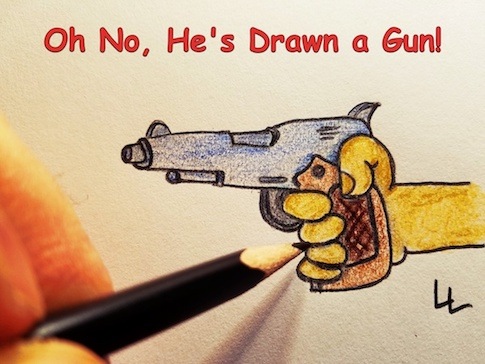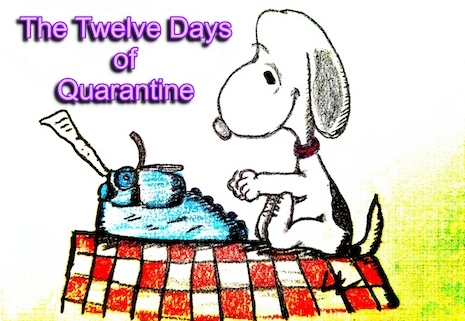Sometimes it’s the tiniest detail that makes a setting pop, zing, and sizzle. They’re the little things that cause readers to sit up and take notice. They evoke emotion and stir memories of real life experiences. They’re the things that make readers leave everything behind to step into the worlds you’ve created. After all, a well-written and well-crafted setting can be a character in its own right, and it’s equally as important as the fictional people who live within the covers of your books.
A great example of a writer who’s mastered the art of setting is superstar author James Lee Burke. Burke, whose settings are incredibly detailed, are written from the heart, and the details he creates shine through in every letter of every word. His scenes and characters are deeply layered and this is so because he often relies on personal life experiences.
Burke often talks about having worked in the Texas oilfields, and as a surveyor. He taught school and was employed once as a social worker. As a reporter he wrote for a newspaper. Like many of us in our early years, and even later in life, money was tight back in the day for Burke and his family. They’d lived in a garage, motels, and a trailer. Thirty years ago Burke was an alcoholic.
It is the combination of Burke’s experiences that offers inspiration for his writings. He’s also adamant that writers should be aware of the people around them.
During a 2015 interview with Publishers Weekly, Burke said, “A good writer is a good listener. The great dialog of the world is all around us, if we’ll only listen. In similar fashion, the great stories are in situations we see everyday, just as the great heroes, the real gladiators, are usually standing next to us in the grocery checkout.”
I’vr often heard writers speaking about adding to their next book a bit of information they heard while at a writers conference. A couple of years, for example, at the Writers’ Poilce Academy, Tod and Lee Goldberg saw a sign featuring a unique business name and both authors immediately claimed “dibs” at using the name in a future book.
Lee Child once asked me about the typical items stored in the trunk of a patrol car. He needed a speck of detail for a Reacher book. J.A. Jance once asked me about driving and skidding on icy roads. The scant bit of information was vital to an opening scene of a book that, as usual with Judy, quickly turned into a bestseller.
Donald and Renee Bain used to contact me often when they needed information for their Murder She Wrote series. Stuart Kaminsky called on both Denene and me for material. Lee Golderg … more of the same—tiny details for a Monk book. James Lee Burke asked me about fingerprints, a very specific but small detail and, like the others who contact various experts, much of the information was needed to “perk-up’ a scene, paragraph, sentence, or dialog. Sometimes all that’s needed is a single word … proper terminology.
So when writing about cops and when you really want to insert something special into your twisted and thrilling tales of mystery, suspense, and/or romance, ask an expert for unique behind the scenes details that will surprise the reader. Show your fans that you’ve done your homework. After all, your goal is to entertain and please the people who spend their hard-earned money to purchase the books you’ve labored over for the past several months, creating something special just for them.
Unique Cop Stuff
To help out, here are a few tiny specks of information you might find intriguing.
- A kevlar vest typically doesn’t quite reach the waistband of the wearer, which leaves a gap of a couple of inches between the bottom of the vest and the belt area of the pants. Nothing there but shirt material and flesh. Therefore, when sliding in and out of a police car, the hard and dense material of the vest sometimes catches and pinches a bit of “love handle,” and it feels like you’d imagine. It hurts and causes the officer to wince. Although, if people are around at the time, the officer will suck it up and pretend it didn’t happen. Still, that tiny tear in the corner of the eye is a dead giveaway. OUCH!
- While wearing a Kevlar vest, officers typically wear an undershirt of some type. The problem, though, is that the undershirt often “rides up” with all of the climbing in-and-out of patrol cars and scuffling with bad guys that officers do all shift long. So, to avoid the uncomfortable bunching-up of material that you can’t get to without stripping down, some officers tuck the tail of their undershirt into their underwear. The elastic band of the “Fruit of the Looms” holds the t-shirt firmly in place.
- Officers sometimes store an extra set of cuffs on the spotlight control arm.
 While driving along, especially on bumpy and curvy roads, etc., there’s a constant “click” of metal tapping metal as the handcuffs hanging from the spotlight arm sway with the motions of the car. After a while, though, the noise is “tuned out” and simply becomes a part of the cacophony of sounds inside the patrol vehicle—constant police radio chatter, FM radio station, the drunk yelling and singing from the backseat, and even a partner going on and on about his kids or the big fish he caught, or the mangled dead body they’d discovered at a crash scene earlier in the night.
While driving along, especially on bumpy and curvy roads, etc., there’s a constant “click” of metal tapping metal as the handcuffs hanging from the spotlight arm sway with the motions of the car. After a while, though, the noise is “tuned out” and simply becomes a part of the cacophony of sounds inside the patrol vehicle—constant police radio chatter, FM radio station, the drunk yelling and singing from the backseat, and even a partner going on and on about his kids or the big fish he caught, or the mangled dead body they’d discovered at a crash scene earlier in the night.
4. Police departments use many symbols of rank designation. Some department supervisors wear white shirts (some departments issue white shirts to all officers), while others issue gold badges to their higher-ranking officers. But the easiest way to tell an officer’s rank is to look at their collar insignia. Each pin is a representation of the officer’s rank.
Collar insignias, beginning with the top ranking officer (chief)
Colonel, or Chief (some chiefs prefer to be addressed as Colonel) – An eagle (birds) on each collar
Sheriffs and chiefs may also wear a series of stars to indicate their rank.

Major – Oak leaf on each collar
Captain – Two bars on each collar (the two bars are often called “railroad tracks,” a great detail to include in a story)
Lieutenant – One bar on each collar
Sergeant hree stripes on the collar and/or the sleeve (photo below)

Sometimes rank is indicated on the badge.

Corporal – Two stripes on the collar and/or the sleeve
Officer – Chevron, or single stripe
Hash marks on the sleeve indicate length of service.

For example, each hash mark normally represents five years on the job. Sometimes, to avoid a sleeve fully-covered in long row of hash marks, stars are often used to represent each five years served. In the case of the officer/police chief above, each star in the circle represents five years of service, plus four hash marks, each of which, in this case, indicate a single year. So, 5 stars and 4 hash marks = a total of 29 years on the job.
Other pins and medals worn by officers may include …

Here’s a closer look at the bling.

(from top to bottom):
– Name tag.
– Award ribbons – Community service award, length of service, expert marksman, lifesaving award, medal of valor.
– Pistol expert (to earn this award the officer must consistently shoot an average of 95% or better on the range).
– FTO pin worn by field training officers.
– K9 pin worn by K9 officers.
– Indicates outstanding service, above and beyond.
*Remember, ribbons and pins and other do-dads will vary by individual departments and agencies.
Pins
Pins on the back of name tags, ribbons, etc. are used to attach the insignias to an officer’s uniform. A small clasp (similar to an ear ring backing) is pressed over the pin tips to hold them in place.

Unfortunately, the clasps often fall off during scuffles with rowdy bad guys and, if the officer is not wearing a bullet-resistant vest, which was typical “back in the day,” could result in the pin tips puncturing the officer’s skin.
For a quick fix in the field, lost clasps can be temporarily replaced with pencil erasers.

Okay, that’s the tip of the detail iceberg. Questions?
“The author must know his countryside, whether real or imaginary, like his hand.” ~ Robert Lewis Stevenson






 People who suffered from excessive fluid build-up decompose faster than those who were dehydrated. And people with massive infections and congestive heart failure will also decompose at a more rapid rate than those without those conditions.
People who suffered from excessive fluid build-up decompose faster than those who were dehydrated. And people with massive infections and congestive heart failure will also decompose at a more rapid rate than those without those conditions.






 In those days there wasn’t a lot of consideration for sterility, and DNA hadn’t yet made its way on the “scene.”
In those days there wasn’t a lot of consideration for sterility, and DNA hadn’t yet made its way on the “scene.” Items that could be cross-contaminated must be packaged separately. There’s a rule of thumb for other types of evidence, too, and here’s a handy list for the proper packaging of those items.
Items that could be cross-contaminated must be packaged separately. There’s a rule of thumb for other types of evidence, too, and here’s a handy list for the proper packaging of those items.

 While driving along, especially on bumpy and curvy roads, etc., there’s a constant “click” of metal tapping metal as the handcuffs hanging from the spotlight arm sway with the motions of the car. After a while, though, the noise is “tuned out” and simply becomes a part of the cacophony of sounds inside the patrol vehicle—constant police radio chatter, FM radio station, the drunk yelling and singing from the backseat, and even a partner going on and on about his kids or the big fish he caught, or the mangled dead body they’d discovered at a crash scene earlier in the night.
While driving along, especially on bumpy and curvy roads, etc., there’s a constant “click” of metal tapping metal as the handcuffs hanging from the spotlight arm sway with the motions of the car. After a while, though, the noise is “tuned out” and simply becomes a part of the cacophony of sounds inside the patrol vehicle—constant police radio chatter, FM radio station, the drunk yelling and singing from the backseat, and even a partner going on and on about his kids or the big fish he caught, or the mangled dead body they’d discovered at a crash scene earlier in the night.














 Five … rolls … of … Charmin!
Five … rolls … of … Charmin!









